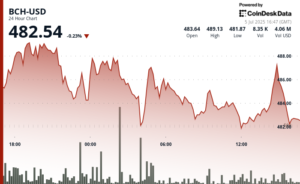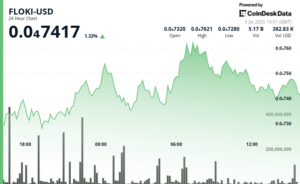The Future of Ethereum: Challenges and Opportunities in a Changing Landscape
Ethereum has long been the undisputed leader in decentralized finance (DeFi), non-fungible tokens (NFTs), and smart contracts. However, its reign is now being challenged by scalability issues, internal shifts, and fierce competition from platforms like Solana. As we explore these developments, it’s essential to note what they could mean for Ethereum’s future.
Scalability: The Crucial Challenge
One of Ethereum’s most pressing challenges is scalability. While the transition to proof-of-stake (PoS) was a major victory for environmental sustainability—cutting energy consumption by over 99%—Ethereum still grapples with the core issue of scaling its network. Gas fees continue to skyrocket during periods of high activity, and slower transaction speeds can undermine user experience. Historical events, such as the notorious Bored Ape Yacht Club NFT mint, painfully illustrated these congestion issues. Although Layer-2 solutions like Arbitrum and Optimism are making strides, Ethereum’s central layer remains strained. Promised solutions like Proto-Danksharding are on the horizon, but full implementation is still a year or two away, at best.
In contrast, Solana has emerged as a formidable competitor, boasting the ability to process up to 60 million transactions daily, while Ethereum struggles to surpass 1 million. Developers seeking faster and more cost-effective alternatives are increasingly drawn to Solana’s advantages, including near-instant transaction speeds and fees that often fall below one cent.
Internal Turbulence: Navigating Through Challenges
Beyond technical hurdles, Ethereum is facing internal challenges that could affect its agility. The Ethereum Foundation, which manages network upgrades, has been subject to criticism for its pace of innovation and shifting priorities. While decentralization is one of Ethereum’s strengths, it can also be a double-edged sword in terms of progress speed. More centralized competitors like Solana can implement updates quickly, providing them with a significant edge in the fast-evolving crypto landscape.
This internal shake-up comes at a crucial time when competition is heating up. Networks that can adapt swiftly to market demands are much more likely to attract developers and projects looking for smoother operations.
Rise of Competitors: Solana and Others
Solana’s innovative use of proof-of-history (PoH) technology has garnered artistic attention, enabling thousands of transactions per second at minimal costs. Its appeal in the NFT and gaming sectors has attracted major projects such as Magic Eden and Star Atlas. Other players, like Avalanche, are also gaining traction with their customizable “subnet” systems, allowing developers to forge unique blockchain ecosystems without the traditional worries of congestion. Aptos, with its developer-friendly tools and high speeds, is quickly capturing the interest of the crypto community as well.
As these platforms continue to grow, Ethereum must recalibrate its strategies to maintain its dominant position. The competition has never been fiercer, and the rapid evolution of technology in blockchain can quickly render established solutions less relevant.
Ethereum’s Lasting Presence: Resilience Amidst Challenges
Despite its current challenges, Ethereum remains a titan in the crypto space. It still dominates sectors like DeFi, NFT platforms, and decentralized autonomous organizations (DAOs). According to Electric Capital’s Developer Report, Ethereum has over 6,200 active monthly developers, far surpassing its rivals. Additionally, Ethereum’s role as a foundational layer for many Layer-2 networks bolsters its long-term viability. While Solana may excel in speed, Ethereum’s security, stability, and robust adoption continue to draw users and projects alike.
Community strength is perhaps Ethereum’s most significant asset. As noted by industry experts, the collaborative ethos among developers encourages a culture of openness and innovation, positioning Ethereum as an invaluable player in the ecosystem.
Macroeconomic Forces: Inflation and Its Impacts
While Ethereum struggles with its unique challenges, external macroeconomic factors also loom large. Rising inflation is prompting many investors to turn to Bitcoin as a safeguard. Its limited supply of 21 million coins solidifies Bitcoin’s reputation as “digital gold.” Additionally, stablecoins like USDC and Tether are enjoying increased popularity as inflationary pressures compel users to seek value retention within the crypto ecosystem. These stablecoins are finding extensive utility in DeFi lending, remittances, and cross-border payments.
Should monetary policy loosen, riskier assets like Bitcoin and Ethereum could see renewed growth, as historical trends indicate that lower interest rates generally fuel high-growth investments, with crypto often reaping significant benefits.
Charting the Path Ahead: Can Ethereum Maintain Its Lead?
Ethereum’s future hinges largely on its capacity to scale effectively. Successful implementation of upcoming upgrades like Proto-Danksharding may reignite Ethereum’s competitive edge. However, if delays continue, Ethereum risks losing more ground to faster chains like Solana, which are actively enticing projects to their architectures.
Amidst these challenges, the broader economic climate is drawing attention back to Bitcoin and stablecoins as valuable tools for hedging risks without abandoning the crypto space. Whether you’re an advocate for Ethereum, interested in Solana, or open to newer blockchain networks, one thing is clear—the crypto landscape is evolving like never before. Staying informed and adaptable is key to thriving in this dynamic environment.

















